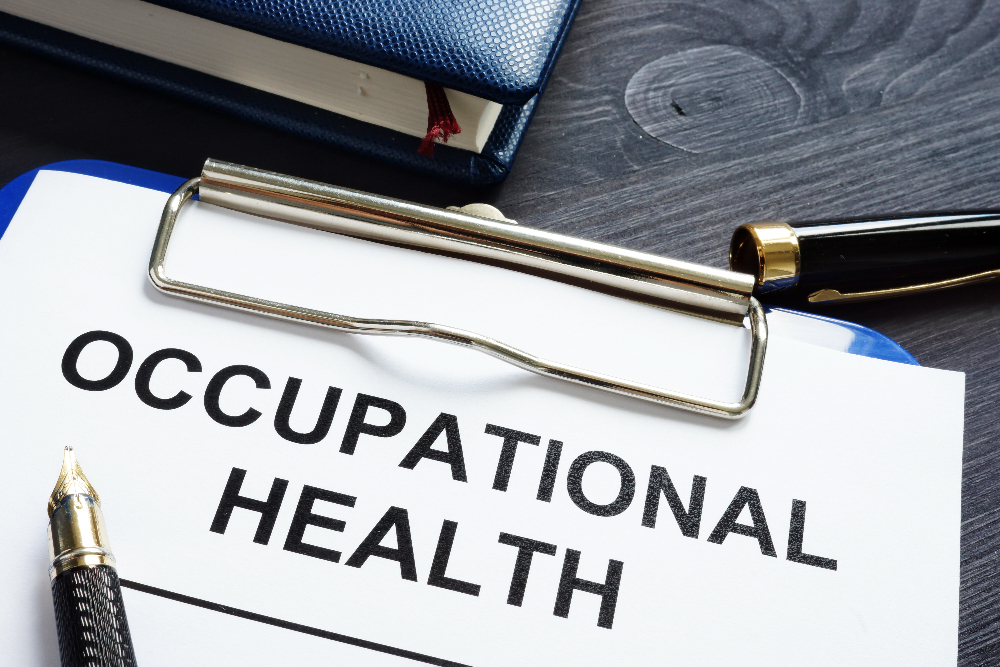One of the key trends predicted for workplace wellbeing in 2024, when we interviewed a raft of experts at the end of 2023, was the rise of Occupational Health (OH).
Sir Ian Cheshire, for example, said this:
“There was a definite shift in 2023 in the corporate world to understanding that occupational health provision generally, and mental health specifically, was ever more important, as the NHS struggled to tackle waiting lists. The realisation that happened in 2023 will be followed in 2024 by a sharp expansion in provision of services from businesses and employee portals to full treatment options, as well as suppliers stepping into this area.”
Big problem for the government (and businesses)
Dame Carol Black, too, when we spoke with her, identified that the “all time high” sickness absence rates would prove a “big problem for both government and employers” and would need solutions to be found.
The government has certainly recognised this “big problem”, and worrying trends accompanying it; the fact that we’re increasingly an aging population with rising rates of ill health; that the NHS is struggling more than ever with huge waitlists; and that there’s a shortage of talent in the workplace, to name but a few.
Part of its “solution” to getting people back into work appears to be Occupational Health. The first step towards this solution was a two part consultation on ways to increase the uptake of OH provision 1) Occupational Health: Working Better – driven by the Department for Work and Pensions (DWP) and the Department of Health and Social Care (DHSC) 2) Tax Incentives For Occupational Health, driven by HM Revenue & Customers (HMRC) and HM Treasury (HMT).
Consultations over, explorations ongoing
The consultations ended on 12th October, 2023, and the government’s response was published in November, from the DWP/DHSC at least. It outlined plans to “imminently” set up an expert “task and finish” group to support the development of a “voluntary minimum framework for quality OH provision which employers could adopt to help improve employee health at work”.
The response specifically talked about options for:
- new voluntary national workplace health and disability standards
- a potential new SME group purchasing framework supported by a digital marketplace
- using the learning, including from the Government’s existing Workforce Expansion scheme, to develop a long-term strategic OH workforce approach to build a multidisciplinary work and health workforce for businesses and providers to improve support for their employees
The government is still exploring the case for providing further support for employers through the tax system.
Need for evidence-based choices
Unsurprisingly, Nick Pahl, CEO of the Society for Occupational Medicine, which has been lobbying hard for OH’s leading role, welcomes the focus on the discipline, as well as the government’s plans to set up an expert group and start a pilot for company incentives for providing OH services.
Pahl has talked to us before about the need for “effective evidence-based choices” in wellbeing, he’s expressed concerns previously that, while OH is delivered by “competent and accountable professionals” who are evidence led, “wellbeing is less so”.
2 landmark resources of 2023
For Pahl, two landmark resources launched in 2023 which moved the dial towards evidence and rigour:
Of the second, he says: “It highlights how, by working together, HR and occupational health can better support employees’ mental health and wellbeing.”
Priorities for 2024?
Looking ahead into 2024 and a general election, Pahl hopes that a new government will prioritise ‘good’ work that supports people’s health and wellbeing. With regard to mental health in particular he says:
“Mental health at work is a key part of ESG objectives that should be reported. The UK is in a fortunate position, with specially trained occupational health professionals, but more investment is needed to expand this workforce. SOM is calling for universal access to occupational health to be in manifestos.”
Not all are thrilled with OH focus
Not everyone is so thrilled, however, with the elevation and leading position that Occupational Health appears to have been given by the government. Katharine Moxham, the spokesperson for Group Risk Development (GRiD), the industry body for group risk protection, is one:
“I can’t think why the government is so focused on OH. Especially when you consider the Fit for Work pilot and the Fit or Work Service, both of which failed, were both heavily focused on OH. I think the government understands it needs to do something, particularly to encourage smaller employers to do more than they are doing, and they’ve for some reason latched onto OH.”
Oranges not the only fruit
For these reasons, GRiD has been keen to get the message out to employers that “oranges are not the only fruit”, as Moxham says:
“There are some other things that employers might want to do, because not every situation is the same; employers have much more in their kitbag than just occupational health. No one’s absence is the same so to focus so narrowly on one particular aspect seems crazy to me.”
So what are these complementary options / alternatives to Occupational Health?
Moxham gives a number of examples: an Employee Assistance Programme, insured long-term sick pay (known as Group Income Protection), Private Medical Insurance, vocational rehabilitation and early interventions such as fast tracked access to counselling and physiotherapy.
GRiD’s concerns with any government legislation or guidance, especially with any tax incentive to use OH, is that employers will be “tempted to go down this route” when it may not be the best one for them.
The organisation has already noted its concerns during the consultation process and Moxham says the DWP’s response is “encouraging” because it has acknowledged other options, particularly Group Income Protection, which has evolved over the years to include a raft of support services. These include, for example, an EAP, vocational rehabilitation, case management and early interventions paid by the insurer.
Definition of OH needs to be broadened
HRMC/HMT haven’t responded yet but Moxham is concerned that they “will want to see the rules really tightly defined” which is why GRID is campaigning for the definition of OH to be “broadened”.
“It’s not that I’m advocating necessarily one ‘thing’ over another but that everything has its place. After all, our members will often work with OH professionals and bring them in to help provide services.”
Regardless of what happens with the government’s consultation, the key takeaway for companies according to Moxham is to “really understand the provision they are buying”, whatever option they go for:
“They need to understand the breadth and what’s included and what they can use it for. That’s not a small piece of work and it sometimes gets buried. Often different people will have been involved in purchasing different provision and it may take time to step back and look at what provision you have in its entirety.”
Look for overlaps and gaps in provision
In particular, she says look out for “overlap” and “gaps” in provision, as well as services that you are not getting the “best value out of”.
Just like Pahl understandably advocates for OH, Moxham argues that the best people to sit down with you and go through this process are your adviser and your Group Income Protection provider, if you have one. Why?
“Because the provider will not charge for this apart from the insurance premium, they’ve been involved in your purchase of provision and, if they bring another specialist in to help, like a vocational rehabilitation advisor, they won’t charge for this either.”
It’s worth keeping in mind however that this is not necessarily a universal option for workers as not all employers are able to offer Group Income Protection – with all the associated health and wellbeing benefits.
Move to measurement
Another good thing so far to come out of the government’s consultation, and the conversations that it’s sparked, is that it signals a general move towards evidence-based solutions and measurement – something the wellbeing industry is already trying to move towards (see this article, and this webinar). It also supports the shift in thinking away from “initiatives” and to “integration” of good wellbeing practice, like good job design (as discussed in this feature).
As Mental Health and Wellbeing Strategist Amy McKeown puts it “the fluff will fade” from the wellbeing industry. She believes that the health provision sector is one “ripe for innovation” and we must move away from “the old commoditised packaged insurance products”:
“On the macrolevel there’s always been this interplay between the state and the employer when it comes to health, but that relationship is going to be fundamentally transformed over the next couple of decades. I think we’ll see a lot of innovation in this space, with creative new products and new entrants, but we’re not there yet in terms of providers stepping up to provide what needs to be provided. I think it’s going to get worse before it gets better and we come out the other side.”

















